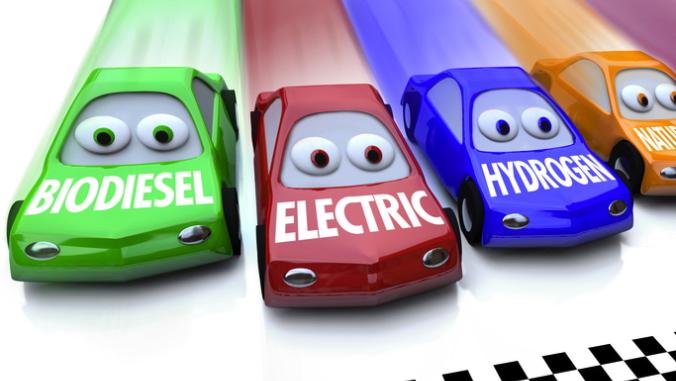Small Firms Driving Minnesota's Growing Green Economy
<p>During a panel discussion at the State of Green Business Forum in Minneapolis last week, Minnesota's Secretary of State, Pollution Control Agency commissioner and Effect Partners CEO and Founder explored the burgeoning green economy in a state that is known for being one of the most civically engaged in the nation.</p>

Minnesota flag image via Shutterstock.
For Paul Aasen, Minnesota-based Tennant Company is a perfect example of a company that is helping to fuel the state's growing green economy.
Tennant, a manufacturer of floor cleaning machines, decided to pursue a green product line several years ago, even though it carried a premium that was 10 percent to 20 percent higher than its competitors.
"Their market has grown from $17 million a few years ago to $96 million in the past year," Aasen, commissioner of the Minnesota Pollution Control Agency, said last week during the State of Green Business Forum in Minneapolis.
Think about that, he implored the audience. "A market where you're 20 percent less competitive and you're now making more money," he said. "So someone in that value chain has recognized the value -- not the regulators -- of the avoided cost or the value of going into that market."
In a panel discussion Thursday, Aasen joined Minnesota Secretary of State Mark Ritchie and Effect Partners CEO and Founder Michael Martin to explore the burgeoning green economy in a state that is known for being one of the most civically engaged in the nation.
Growth in hiring demand for green jobs has grown by an average of 30 percent over the last few years, according to the report, "Minnesota's Emerging Green Economy: Green Jobs Report 2011." Although that rate mirrors the national average, what bodes well for the state is that more than half of the positions were newly created, rather than being created through attrition.
"Since newly created positions represent growth openings created by economic expansion, this finding demonstrates the emerging nature of Minnesota's green economy," the report said. "Moreover, this growth will likely occur in very small or small firms, which hold the highest share of newly created positions and also the highest share of green vacancies statewide."
Those small firms include mom-and-pop organizations in the state the specialize in fluorescent light recycling, Aasen pointed out.
"There are only a couple in the state who can do that," he said. "They have to interact with us on the mercury side of the equation, but that's a very small operation at its start, yet they're part of this conversation and part of what you do with this thing when you capture it on the backside, finding that alternative market."
About 50 to 60 new entities of all kinds come through Ritchie's office ever year, 95 percent of which are small.
In terms of those with a green edge, they tend to fall into three buckets, he said: retirees of some of the state's larger companies, such as 3M, who have an idea they want to bring to market; young people opting for self-employment amid a tough job market; and retiring military veterans looking to use their leadership skills to pursue sustainability.
These smaller firms tend to be more dynamic, creative and flexible, Ritchie said, with an emphasis on networking and a commitment to the state's brand.
"People have wanted and I think now are very serious about reinforcing the idea that brand Minnesota includes creativity and long-term commitment to green tech and to protecting the environment as well," Ritchie said. "Our office gets to be there and be a partner with businesses pursuing that path."
Minnesota flag image via Shutterstock.





